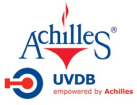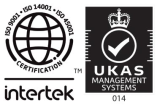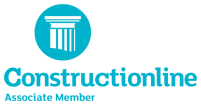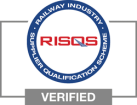Safe use of hand chain blocks
Please note that these instructions are not exhaustive; and they may not be appropriate for all pieces of equipment or applications. Always refer to the manufacturers instructions for your specific equipment. if you are still unsure always consult an appropriately qualified individual.
View information on the Chain Blocks (manuall and powered) in our online catalogue
When using hand chain blocks always:
- Store and handle chain blocks correctly.
- Inspect chain blocks and accessories before use and before placing into storage.
- For top hook suspension, use hooks that are fitted with safety catches, or mouse the hook, ensuring the support fits freely into the seat of the hook.
- For trolley suspension ensure the trolley is correctly set for the beam width.
- Check that the bottom hook will reach its lowest point without running the chain fully out.
- Adopt safe slinging practices and follow the instructions for the safe use of the equipment used.
When using hand chain blocks never:
- Expose chain blocks to chemicals, particularly acids, without consulting the supplier.
- Replace the load chain with a longer one without consulting the supplier.
- Use undue effort to force the block to operate.
- Throw, drop or drag a chain block.
- Allow oil or grease to come into contact with the brake.
- Expose a chain block directly to the elements, water spray, steam etc without consulting the supplier.
Selecting the Correct Block
- Hand chain blocks are available in a range of capacities and with various types of suspension. Select the block to be used and plan the lift taking the following into account:
- Type of suspension - hook, trolley etc.
- Capacity, class of use and range of lift.
- Chain blocks are designed for vertical lifting only.
- Consult the supplier if the block is to be used in areas of high risk, exposed to the elements, water, steam etc, with hazardous substances, eg acids** or chemicals, or subjected to extremes of temperature.
- Storing and Handling Hand Chain Blocks
- Never return damaged blocks to storage. They should be dry, clean and protected from corrosion.
- Store blocks by their top suspension with chains clear of the ground, the chains may be wrapped together to facilitate this. Non-portable blocks stored outdoors should be covered and protected from corrosion.
- Blocks should not be dropped, thrown or dragged across the floor.
- Never galvanise or subject the chain, or other load bearing parts, to any other plating process without the express approval of the supplier.
Installing and Commissioning
Follow any specific installation instructions issued by the supplier and the general requirements given overleaf. Try the block to ensure that it operates correctly and that the brake is effective. Ensure the chain is not twisted; it must move freely. The bottom hook must reach the lowest position required without the chain running fully out.
Using Hand Chain Blocks Safely
- Do not attempt lifting operations unless you understand the use of the equipment and the slinging procedures.
- Do not use defective blocks, slings or accessories and never use the block chain as a sling.
- Check the slinging arrangement, that the block is safely rigged and that chains are not twisted, particularly in the case of multi-fall blocks.
- Check the load is free to move before commencing and that the landing area has been prepared.
- Raise the load just clear, then halt the lift to check the integrity of the block, slinging method etc.
- Check the travel path is clear and that you have a clear view so as to avoid accidental hook engagement or collision. Follow any particular site safety rules applicable to the movement of suspended loads.
- Keep fingers, toes etc clear when lowering loads.
In-service Inspection and Maintenance
Follow any specific maintenance instructions issued by the supplier but in particular keep load chains lubricated and check the operation of the brake. Brakes must be kept free of oil, grease etc. Never replace the load chain with a longer one without consulting the supplier. Regularly inspect the block and, in the event of the following defects, refer the block to a Competent Person for thorough examination: wear; damage to trolley, hooks and fittings; damaged or distorted slack end anchor; chains worn, bent, notched, stretched, corroded, do not hang freely, twisted or jump; load slips or will not lift; damaged block casing; illegible markings.
LIFTING APPLIANCES FOR GENERAL PURPOSES (MANUAL AND POWER OPERATED BLOCKS)
The following information is based on Section 1 - Appendix 1.6 of the Code of Practice for the Safe Use of Lifting Equipment* and should be read in conjunction with the instructions for safe use, of which it forms an integral part and with any specific instructions issued by the supplier. This information is of a general nature only covering the main points for the safe use of manual and power operated blocks.
When Using a Manual or Power Operated Block Always:
- Ensure suspension points and anchorages are adequate for the full imposed load.
- Check the load chain/wire rope is hanging freely and is not twisted or knotted.
- Position the hook over the centre of gravity of the load.
- Check the operation of the brake before making the lift.
- Ensure the slings are secure and load is free to be lifted.
- Check the travel path is clear.
- Ensure the landing area is properly prepared.
When Using a Manual or Power Operated Block Never:
- Exceed the marked SWL.
- Use the load chain/wire rope as a sling.
- Shock load the block or other equipment.
- Lift on the point of the hook.
- Overcrowd the hook with fittings.
- Permit the load to swing out of control.
- Leave suspended loads unattended.
Types of blocks
A wide range of manual and power operated blocks is available. This section of the leaflet is concerned with matters which are common to the safe use of the following listed equipment when used to lift in a vertical plane only. Pulley blocks for fibre or wire rope used with winches, hand chain blocks, chain lever hoists, power operated wire rope blocks and power operated chain blocks. The use of trolleys is often associated with blocks and these may be built in with the trolley as an integral part of the appliance, or independent with the block hung on. Operative Training Lifting appliances should only be used by trained operatives** who understand their use and that of the associated equipment used in the lift.
Installation and Commissioning
The erection procedure will vary with the equipment and should be carried out in accordance with the suppliers instructions paying attention to the following matters:
- Prior to installation inspect the equipment to ensure no damage has occurred in store or transit.
- Ensure the support structure is adequate for the full loads that will imposed, is tested and marked with the SWL.
- When erecting trolleys ensure they are correctly set for the beam width and that the track is fitted with end stops and remains level at all loads up to the maximum.
- When suspending appliances by a top hook ensure the support fits freely into the seat of the hook.
- After erection ensure that the chain/wire rope hangs freely and is not twisted or knotted.
- With power operated blocks the supply should be connected by a suitably Qualified Person taking account of any statutory or technical requirements (eg Electricity at Work Regulations, Pressure Systems and Transportable Gas Containers Regulations).
- Test run to ensure the free and correct movement of the chain/rope. Check the operation of the brake. Check direction of control command, position and operation of travel limits and safety devices.
Safe Use of Blocks
The basic objectives of any lifting operation are to move the load to the desired location and land it safely, efficiently and without damage to the load, the equipment used or the surrounding buildings, plant etc. In addition to any specific instructions relating to the block the following general points must be observed:
- Never attempt lifting operations unless you have been trained in the use of the equipment and slinging procedures.
- Position the hook directly over the centre of gravity so that the line of pull is vertical.
- Do not use the chain/wire rope to sling the load, ie do not wrap it round the load, back hook or choke hitch.
- Do not lift on the point of the hook or overcrowd the hook with fittings.
- Never lift/lower more than the marked SWL. In the case of manual equipment if abnormally high effort is required, and with power operated appliances they fail to lift the load, or if the load slips this is an indication of too high a load or a fault - check the load and the appliance.
- Avoid unnecessary inching of power operated appliances and do not impose sudden or shock loads.
- Push rather than pull loads suspended from appliances with push/pull trolleys and if un-laden pull on the bottom hook. Never pull an appliance by the pendant control, supply cable or hose.
- Avoid sudden movement of travel motion or undue effort in pushing the load which can cause the load to swing.
- Avoid excessive or intentional use of motion limits unless they are additional limits intended for that purpose. Avoid running appliances against end stops.
- Do not allow anyone to pass under or ride upon the load. Never leave suspended loads unattended unless in an emergency then ensure the area is cordoned off and kept clear.
- Do not remove guards, protective covers, weather proof covers, heat shields etc without the authority of a Competent Person
In-Service Inspection and Maintenance
The Provision and Use of Work Equipment Regulations 1998 and the Lifting Operations and Lifting Equipment Regulations 1998 both require that lifting equipment properly maintained. This is an ongoing duty that falls on the user and a planned routine maintenance programme will be necessary. In addition to the statutory thorough examinations by a Competent Person, regular in-service inspections should be made to find any faults and damage that might arise. If any are found they should be referred to the Competent Person. The maintenance programme must meet the requirements of the manufacturers instructions and any special requirements due to the conditions of service. This may be combined with maintenance of other equipment used in association with the appliance, eg power feed system. Check the block and its associated equipment daily for obvious faults and signs of damage.







